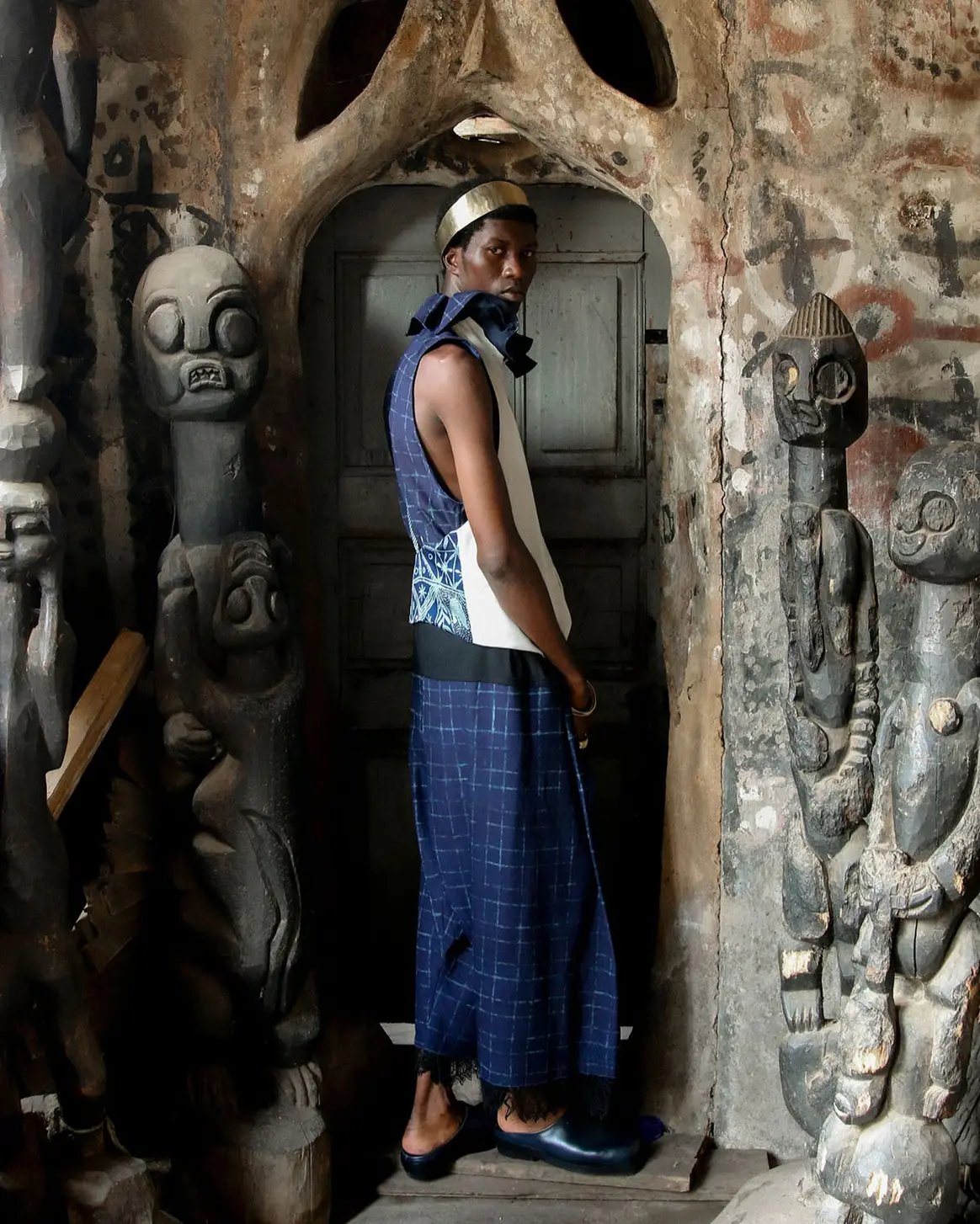Design Line: 13 – 19 May
Grab your coffee and sit down to read this week’s Design Line, featuring a slightly left field collaboration between Nespresso and Hublot to make a fancy watch out of used coffee pods. In other news, Adidas finally makes a call on what to do with its unsold Yeezy stock, and the Venice Architecture Biennale opens under the shadow of visa refusals for Ghanian contributors.
Lesley Lokko has called out the “absurdity and hypocrisy” of Italy’s visa denials (image: La Biennale di Venezia).
A diplomat in Venice
This week, the design glitterati have descended on Venice ahead of the opening of the city’s 2023 Architecture Biennale. There is much excitement, but all is not well at the event’s centrepiece, the 18th International Architecture Exhibition. Under the theme of “Laboratory of the Future”, curator Lesley Lokko elected to focus on design from the African continent for the first time in the Biennale’s decades-long history. What should have been an overdue celebration has, however, been overshadowed by a diplomatic incident, as three of Lokko’s Ghanian collaborators have been refused entry to Italy. “They have all been denied visas by the Italian government,” Lokko said in an email seen by the Architects’ Newspaper, “specifically the Italian Ambassador to Ghana, Daniela d’Orlandi, who has accused me of trying to bring ‘non-essential young men’ into Europe.” It’s a chilling indictment of the country’s swing to the far right. Italy’s populist prime minister, Giorgia Meloni, came to power late last year on an anti-immigration platform, blocking rescue ships attempting to save refugees from Italian ports. Lokko’s staff already had accommodation and returned flights booked, but Lokko described d’Orlandi’s visa refusal as the actions of an “ambitious career diplomat looking to make her mark with a right-wing government”. The opportunity to enjoy the end result of so much hard work on a project dedicated to highlighting the work of Black designers being denied due to racist and xenophobic policies is a cruel irony. As Lokko said, it underscores “the absurdity and hypocrisy [of] a show about Africa to which Africans have been denied access, despite contributing our labour.”
A difficult sell
Destroy, sell, donate? This was the question facing Adidas when the company severed its working relationship with Kanye West in October 2022, following a slew of outrageous, deeply antisemitic comments made by the musician/designer across social media and interviews. Since 2013, the company had worked with West on its Yeezy line of shoes, with the decision to terminate this arrangement leaving the sportswear giant with unsold stock reported to have a market value of €1bn. Destroying the shoes would prevent West from profiting from royalties (and also avoid putting out product into the world that is indelibly tied up with racism), but represent an environmental blow; selling or donating the shoes would prevent wastage, but prove a bitter pill to swallow for the aforementioned reasons. Around half a year later, Adidas has now made a decision, with chief executive Björn Gulden announcing that the company will “try to sell parts of the product” and donate some of the money to charities representing people who “were hurt” by West’s comments. The exact nature of the sale has not been determined, but Gulden has noted that Adidas will “probably not make profit”. The news was welcomed in many quarters, with the Financial Times interviewing Josef Schuster, president of the Central Council of Jews in Germany, who said that Adidas’s willingness to donate some money had to be “highly appreciated”, but said it was “very problematic” that West was going to have financial gains from further Yeezy sales. “From my perspective, the wrong party [Adidas] is going to be punished here,” Schuster added. There may be truth in what Schuster says, but the suggestion that Adidas is entirely innocent in proceedings should still raise an eyebrow. If only there had been some kind of sign that their longterm collaborator was not, perhaps, the world’s greatest guy…
An aerial view of a kite in the desert of Saudi Aravia (image: O Barge, CNRS, via New Scientist).
Old kites; older drawing
Disegno loves a world record, which is why we were delighted to learn this week of a new champion in the field of “world’s oldest architectural plan”. Publishing in the journal Plos One, a team of scientists attached to the Globalkites project have discovered two stone monoliths in Jordan and Saudi Arabia that are carved with precise, to scale depictions of nearby desert kites: vast structures that it is now believed stone age communities used to hunt animals through stone “tails” that guided them into a walled enclosure (the body of the “kite”). The carvings are estimated at around 7,000 and 9,000 years old and are remarkable given that the type of kites they depict are too large to be seen in their entirety from the ground, and instead need to be surveyed from the air. Early evidence of architects at work? Potentially, although it remains unclear as to whether the plans served as blueprints for builders of the kites, or maps for hunters using the structure. Either way, it is a stunning discovery – a new (by which we mean old) world record to stand in awe of.
Lagos Space Programme’s winning collection for the International Woolmark Prize (image: Isabel Okoro).
Lagos Space Programme takes off
Nigerian fashion brand Lagos Space Programme has won the prestigious 2023 International Woolmark Prize, which recognises rising design talent working with Australian Merino wool. For the competition, Lagos Space Programme founder Adeju Thompson explained to WWD that they created a collection of non-binary wool pieces that mixed tailoring with elements and fabrics of traditional Yoruba dress as an act of “cultural preservation and cultural celebration” and “to communicate about how there’s an element of activism in the work I do. As a queer person from Nigeria, it’s very important to communicate who I am.” Thompson said that they plan to use the prize money of $200,000AUD to buy solar panels to power their studio during the country’s regular power outages. “Operating in Nigeria, the power is so bad so I was discussing with my business partner installing a solar panel so we’re off the national grid,” they told WWD. “We have a generator in my studio now. We spend a lot of money every week to power it, so if we invest in solar, it’s a huge investment obviously, but it means in the long run we’re saving so much money.” Thompson stressed that their win was particularly meaningful as young Nigerian designers lack access to the kinds of financial support their counterparts in Europe enjoy. “This is also a win for them,” they said. “I’d like to really break misconceptions about African design,” Thompson added. “Even though I tap into my Nigerian identity, I don’t want to be defined by it because I’m a global designer.”
I like my coffee like my watches – expensive (image: Hublot).
Time for a coffee
Nespresso is delicious, just ask George Clooney. But when you’re using multiple disposable pods a day to get your coffee fix, the environmental guilt ramps up faster than your caffeine anxiety. In order to demonstrate the potential of recycling these leftover bits and dregs, Nespresso has teamed up with fellow Swiss brand Hublot to create a watch out of used pods, which launched this week. The metal casing of the Hublot Big Bang Unico Nespresso Origin has been made out of aluminium recovered from Nespresso pods, while the strap material has been infused with coffee grounds. Buyers can choose from a coffee-infused rubber strap, or a fabric version made of S.Café – a yarn produced out of used coffee grounds developed by textile brand Singtex. Coffee’s natural odour-control qualities (perfumers famously sniff the beans to refresh their nasal palettes) reportedly cary over to S.Café fabric, presumably granting the watch strap powers of stink-resistance. Such glamour! While this all sounds very fun and eco-friendly, the Hublot Big Bang Unico Nespresso Origin is not designed for the mainstream coffee fan or watch dilettante. Only 200 have been made, and each one costs $24,100. By our calculations, for that money you could get Nespresso’s most expensive machine (the Creatista Pro) and enough pods to last you a lifetime. Or you could make like the Disegno team and stick to an old-fashioned cafetière.
Metanoia (2019) by Eriko Inazaki, the winner of the Loewe Foundation Craft Prize (image: Loewe).
An incredible sense of anxiety
Credit to Loewe: the Spanish fashion brand gets craft. Asides from the craft traditions it itself uses within its leatherwork, the brand has excelled in recent years in its displays of different craft traditions during Milan Design Week, while its Loewe Foundation Craft Prize is now in its sixth year: an award that carries with it considerable media exposure, as well as the no small matter of €50,000 in prize money. This year’s winner, announced this week, is the Japanese ceramicist Eriko Inazaki, who was selected for her Metanoia (2019) sculpture. Disegno has, to date, only seen the piece through images (the works are on display at the Noguchi Museum in New York), but it is a work that seems to demand in-person inspection. The work is roughly oval shaped, but its surface erupts in blooms of biological extrusions, all executed in ceramic – the impression given is of an amphora left on the sea bed, over which corals have grown for millennia. “What I love about the work is you have no idea what it’s made out of,” noted Jonathan Anderson, Loewe’s creative direcor. "It has an incredible sense of anxiety in it, which I quite like. At the same time, there is a depth of field that is very unusual in ceramics. You get this idea that it has so many layers that you go into, that you can get lost in it.” Inazaki’s work seems a fine embodiment of the prize’s ambitions to present craft practices as every bit the creative equal of art – she is a worthy winner.






